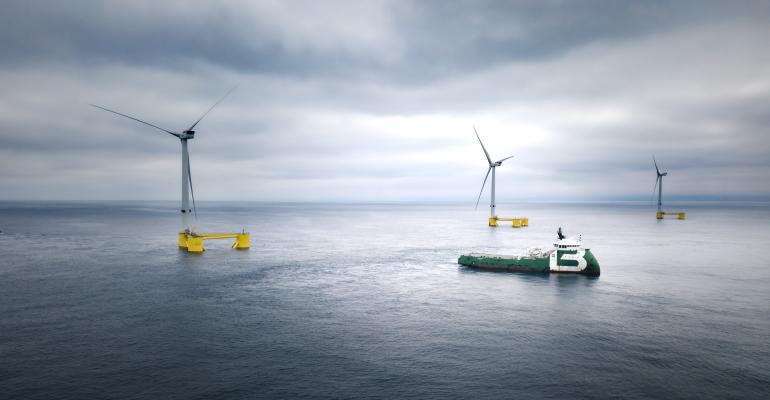Clarksons Renewables Intelligence Network sees a global potential for 14.5GW of power generated by 1,300 floating offshore wind turbines by 2030.
This represents a huge expansion for floating wind where only 10 projects of 124 MW are active, with a further 8 projects of 165 MW under construction. The forecast would see 96 floating offshore wind farms by 2030.
Floating wind is seen as allowing the development of new regional markets where offshore wind has previously not been feasible. Clarksons noted over 150 potential offshore wind projects, producing over 100GW, had been mooted by developers in 21 countries or regions.
“Floating wind poses new installation challenges for developers and our analysis examines which contractors and yards have already been active in the sector, as well as profiling the demands on the installation and support fleet, port infrastructure and the unique maintenance requirements of floating wind farms,” commented Steve Gordon, Managing Director of Clarksons Research.
Leading developers at present include Equinor, Cobra, Ocean Winds and Windplus, with leading potential seen from Bluefloat, Hexicon, Oceanex, Aqua Ventus, and Scottish Power.
“The broader offshore wind industry continues its exciting growth phase and our long term scenarios suggest offshore wind will play a vital role in energy transition and may provide between 6% and 9% of global energy supply by 2050,” Gordon said. This compares to just 0.3% today.
Copyright © 2024. All rights reserved. Seatrade, a trading name of Informa Markets (UK) Limited.
Add Seatrade Maritime News to your Google News feed.  |

